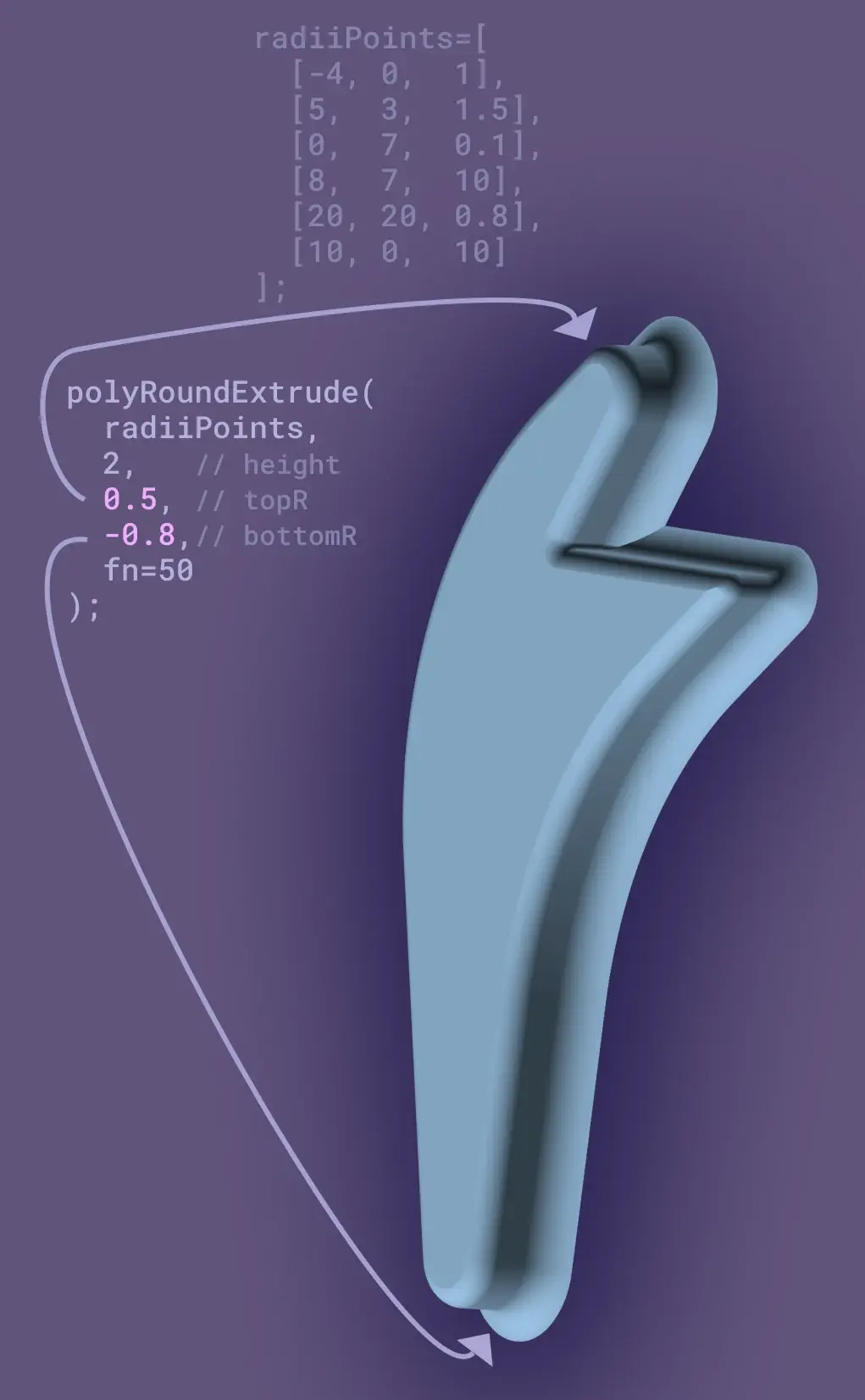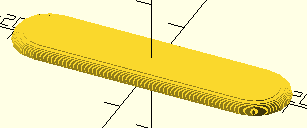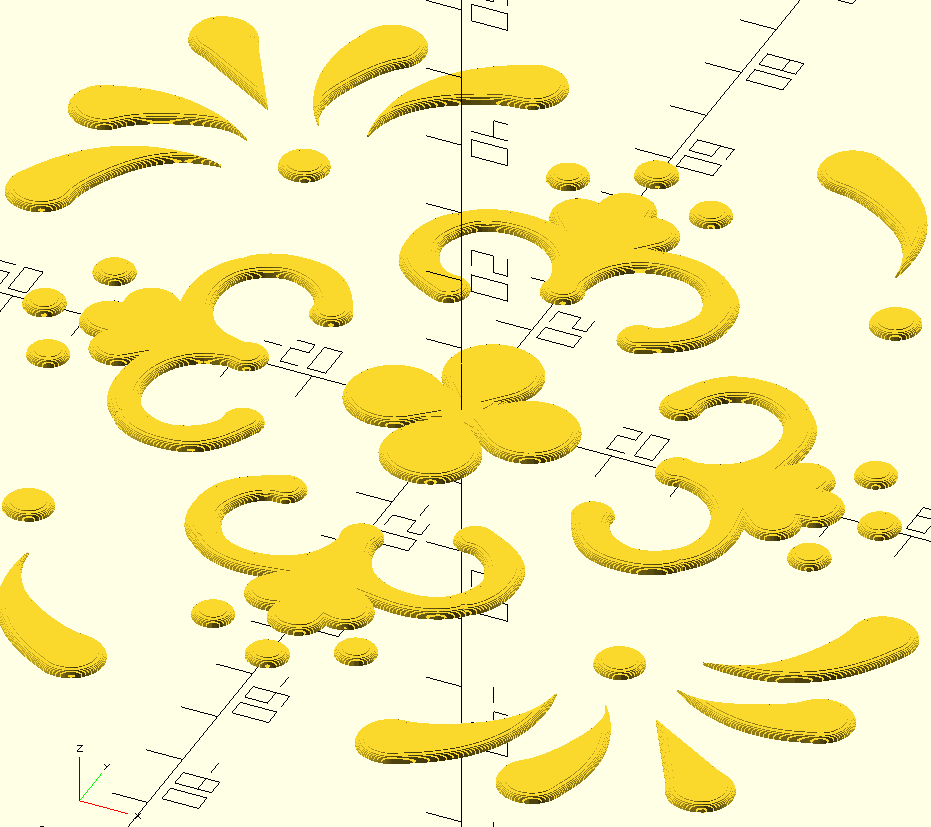We all know about the linear_extrude(...) function that turns 2d things into 3d things.
I sometimes have found myself wishing for a similar function which could make a more rounded, result.
Just to illustrate what I'm hoping to achieve, my dream solution would, given this 2d outline:

would give me something like the following:
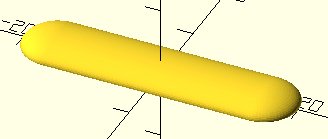

Just to further illustrate, the code I used to generate outline above:
hull() {
for (i=[-1:1])
translate([i*15, 0])
circle(d=10);
}
And the "pillowed" version that shows the desired result giving the above outline:
$fn=64;
rotate([0, 90, 0])
linear_extrude(30, center=true)
scale([4, 10])
difference() {
circle(d=1);
translate([0.5, 0])
square(1, center=true);
}
for (i = [-1, 1])
translate([i*15, 0, 0])
scale([10, 10, 4])
difference() {
sphere(d=1);
translate([0, 0, -0.5])
cube(1, center=true);
}
The outline I actually want to pillow for my particular current use case looks like this:
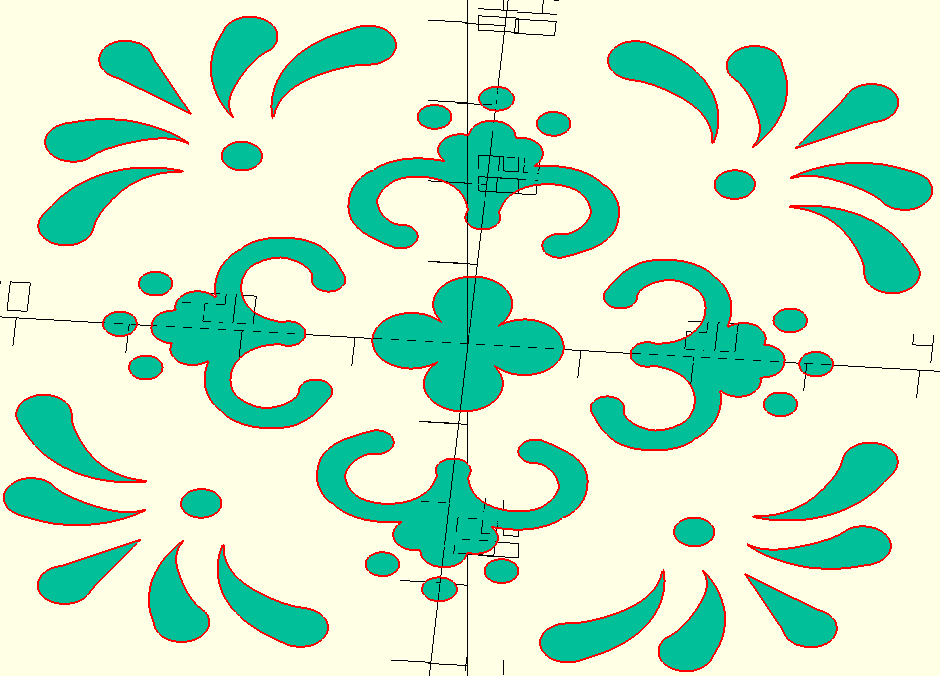
(Credit to this person on Printables for the Talavera tile pattern.)
I'm hoping there's a way to do this I'm not thinking of, or a library I'm not familiar with. The example above makes an elliptical curve, but I'm not married to elliptical in particular. Anything somewhat similar would be fine.
Thanks in advance for any help!
